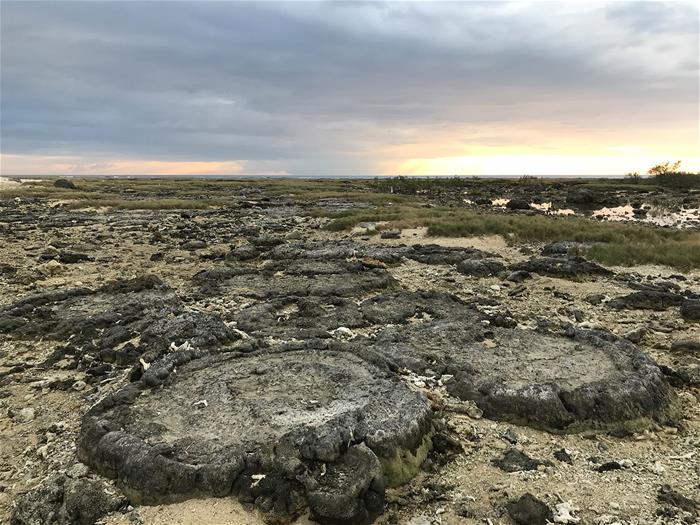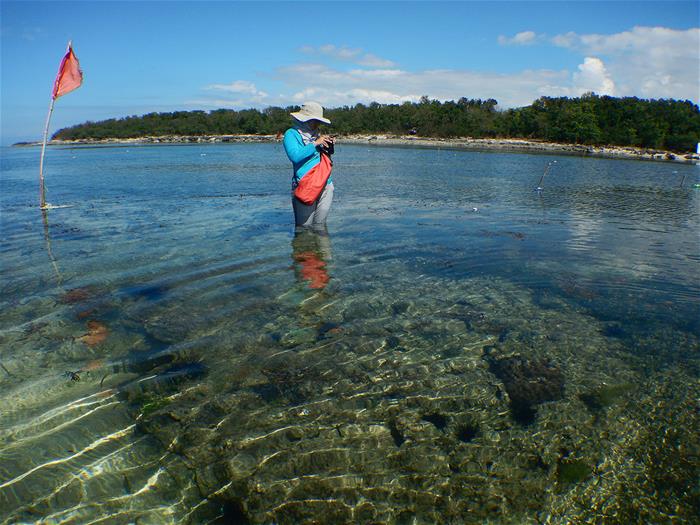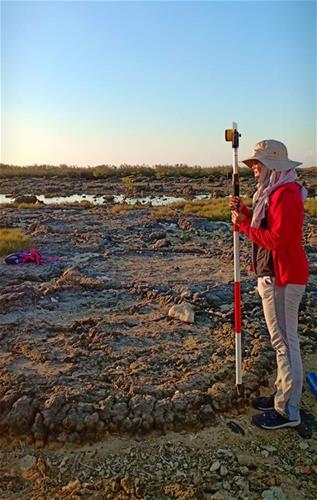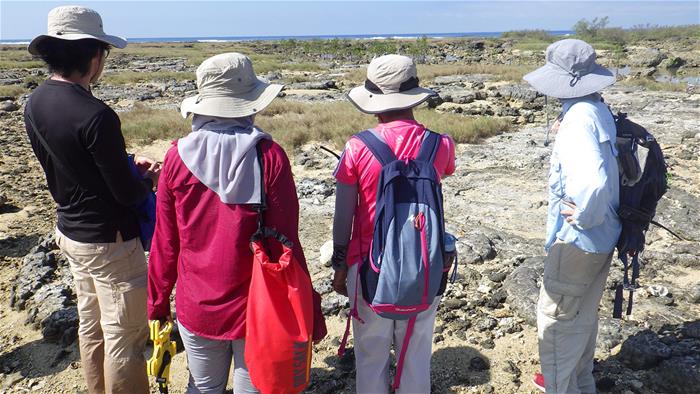In this interview series, we learn about the perspectives of the PhD students whose wide-ranging work contributes to the SEA2 Program and share what drives them in their research.
Research in the Earth sciences can be tricky due to the challenges of working in a natural environment. While instrumental data can be vital to studies, it is not always available. Researchers must thus be creative in such scenarios, adopting alternative methods to collect data or, in the case of sea-level science, finding proxies.
Apart from the use of fossilised foraminifera, pollen, and plant remains to determine if a coastal area had been inundated in the past, and hence hint at changes in past sea-level, a group of scientists is tapping into coral microatolls for clues.
The sea level and earthquakes team, led by Assistant Professor Aron Meltzner, has been using coral microatolls, which can be used as sea-level indicators, to understand land movement and sea-level changes.
 Part of this unique team is fourth-year PhD student, Gina Muthia Sarkawi, from West Sumatra, Indonesia, whose work has revolved around coral microatolls in the last four years.
Part of this unique team is fourth-year PhD student, Gina Muthia Sarkawi, from West Sumatra, Indonesia, whose work has revolved around coral microatolls in the last four years.
"A coral microatoll can act as a natural tide gauge for us to understand how sea level changes," she explained. "If we know how relative sea level changes, we can also use it as an indicator, or proxy, to understand how land changes. This is great, as we sometimes can’t get land-based GPS equipment near those areas."
Fourth-year PhD student, Gina Muthia Sarkawi (Source: NTU)
"In the field, we observe their morphology – they have annual bands like tree rings which grow every year. Coral microatolls grow outward and upward every year, and when relative sea level falls, it becomes exposed to air for a prolonged period, causing the top part of the coral to die. This event is known as a diedown. We can use the timings of the diedowns over time to find out how relative sea level has changed, and by taking samples and using radiometric dating methods, we accurately pinpoint when relative sea level fluctuated."

The fossilised coral microatolls of the La Union site (Source: Aron Meltzner/Earth Observatory of Singapore)
Her research has focused thus far on the coral microatolls in the La Union province of the Philippines, which has multiple generations of coral microatolls.
She and her team members have obtained interesting findings – the uplifted fossil coral microatolls were found to date as far back as 1,000 years BP, while the submerged ones dated to the 1800s.
"If we can understand how living corals are influenced by its modern relative sea-level processes and assume these processes are consistent through time, we can create a time series for how relative sea level has changed over time at a site."

Gina documenting a coral microatoll at a field site (Source: Loraine Faye Sarmiento/University of the Philippines)
Using X-ray to analyse slabs of these corals, they found that there has been at least one earthquake that has etched into the coral’s growth history, showing that the earth had subsided abruptly a thousand years ago.
"We infer that it also happened again in the 1800s," she went on, "subsiding rapidly at about 36cm, which provides us with an interesting data point to model the cause of these earthquakes."
Gina was first inspired to study earthquakes when she was only nine years old.

"I distinctly remember seeing a CNN TV report on Boxing Day on the 2004 Aceh-Andaman earthquake… I remember being very shocked about it, becoming very interested in earthquakes, and feeling a connection with my homeland."
Speaking further about her work, she elaborated, “Now that we are trying to create earthquake models to see what potential sources, or faults, as well as the subduction at the Manila Trench, could generate this land change we see in the coral data. An important question sparks - if we get large earthquakes there, how do people respond? There hasn’t been a very large earthquake originating from the Manila Trench in the Philippines’ recorded history."
"And if the something of the scale of the 2004 Andaman-Aceh earthquake does happen in the Philippines," she wondered, "Would people be prepared? We are looking back into the past to understand that. And with help from our other collaborators on the SEA2 Program, we could better understand this region’s risk."
"Associate Professor Emma Hill’s geodesy group talked about an earthquake gap along the Sunda arc around the Mentawai Islands, as it hasn’t recently had any large earthquakes. When that happens, it’s probably going to be very large and could potentially be felt in Singapore as well, though we can’t predict the precise time. That’s something to prepare for in the near future."
One of the biggest takeaways from her experience in graduate studies, she also shared, has also been discovering the inter-connectedness of the different disciplines and stepping out of the box.
"Realising that sea level is actually something I can consider as an avenue of research has been humbling and interesting," she replied.
"I came from a very pure geoscience (mono-disciplinary) background, so when I realised we’re looking at corals – living organisms – I thought, 'How did anyone come to think of that?'"
Gina collecting elevation and distance measurements on rings of a fossilised coral microatoll with a surveying rod at the La Union field site (Source: Loraine Faye Sarmiento/University of the Philippines)

In the field with some of the team: (from left to right) ASE student Chai Min Wei, Gina, field assistant Loraine Faye Sarmiento and Asst. Prof Aron Meltzner (Source: Junki Komori/Earth Observatory of Singapore)
And if there is a song that could represent her PhD experience, "It would be 'The Middle' by Jimmy Eat World," Gina says. "The song encourages me to do my best, stay optimistic, and not rush through the process. It’s been a great motivational song throughout my PhD, with all of my successes and failures, and a reminder for me to live in the moment."